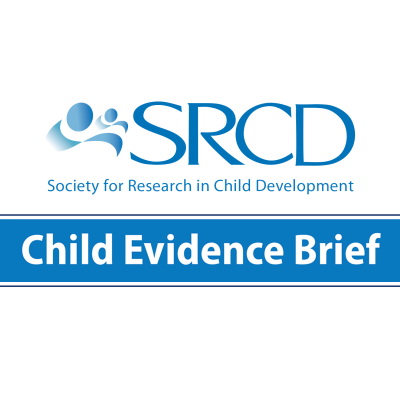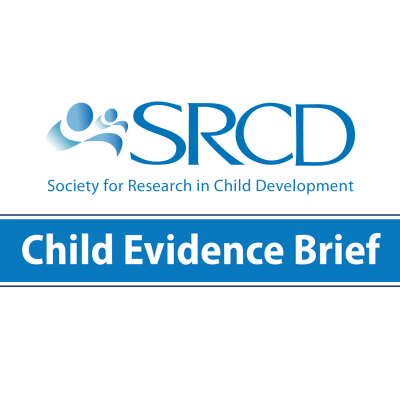How Abuse and Neglect Affect Children's Minds and Bodies
Social Policy Report Brief, Volume 28, Issue 1
Why Does This Matter?
More than 676,000 children in the United States are abused and neglected annually, and 1,500 die as a result. Maltreatment harms children’s mental health and academic achievement, and increases their risk for chronic diseases of aging. In addition to the human costs, the estimated costs of this maltreatment—billions of dollars annually—have raised calls for better understanding of how maltreatment harms children and more effective approaches to prevention and treatment. New studies on the neurobiological science of maltreatment show that child abuse and neglect alter children’s biological systems, including brain development.
Because the adverse effects of maltreatment can become biologically embedded early in children’s development, efforts to treat child abuse and neglect should be renewed and expanded.
Policy and Practice Implications
Research suggests that the period from birth to age 3 is a critical window for identifying families at risk for abuse and neglect, and treating child victims using evidence-based practices. Efforts should focus on:
- Including universal mental health screening in U.S. Child Protective Services evaluations and access to evidence-based behavioral therapies paired with appropriate psychiatric assessments.
- Preventing emergence of maltreatment through programs proven effective in the community; examples include the Nurse-Family Partnership, the Safe Environment for Every Kid program, and the Positive Parenting Program, or Triple P.
- Preventing recurrence of maltreatment; though this has proven more difficult than prevention, some success at reducing recidivism among parents has been seen with multiple referrals to U.S. Child Protective Services using Parent-Child Interaction Therapy.
- Offering coordinated systems of care for children and families in the child welfare system, including comprehensive mental and physical health care, with caseworkers, pediatricians, and psychologists working as teams.
- Treating victims of maltreatment with evidence-based approaches specific to those who have experienced trauma; such interventions can include the judicious use of psychotropic medications.
What the Research Says
- Children are at greatest risk of victimization before age 3, a time of rapid brain development.
- Abused or neglected children are at greater risk for poor health in adulthood, including chronic aging diseases like diabetes, cancer, and heart and lung disease, than nonmaltreated children.
- Abuse and neglect are “toxic stressors”—chronic, uncontrollable events resulting in strong, frequent, or prolonged activation of the body’s stress- management systems.
- Exposure to toxic stress early in development shapes how three integrated systems work: the immune system (which protects against disease), the neuro-endocrine system (which releases hormones to control bodily functions), and the central nervous system (which is comprised of the brain and spinal cord).
- Researchers are beginning to understand how the chronicity, severity, and timing of maltreatment shape the functions of these systems. Researchers can now examine the effects of interventions on helping children regain normal psychobiological functioning.
- Few maltreatment-prevention programs that have been proven effective have been scaled up to work in communities. Evidence is limited on the effectiveness of programs that prevent recurrence of maltreatment.
Facts at a Glance
- U.S. Child Protective Services agencies receive more than 3 million reports of abuse and neglect annually. Some 60% to 65% of these reports are investigated, and approximately 20% of investigations identify at least one child as a victim of abuse or neglect.
- Repeated occurrences of abuse and neglect are seen among families involved in the child welfare system, and approximately 40% of families re-enter the system within five years.
- In a nationally representative sample of children involved with the U.S. child welfare system, between 18% and 22% had significant emotional and behavioral problems as reported by parents, teachers, or other youth, compared to 8% of children in the general population.
- In a given year, new cases of maltreatment are estimated to cost $80 billion to $124 billion for medical and mental health services, lost productivity, and crime. Most of this is paid for by taxpayers.
- The Federal Child Abuse Prevention and Treatment Act defines child abuse and neglect as, at minimum, “Any recent act or failure to act on the part of a parent or caretaker which results in death, serious physical or emotional harm, sexual abuse or exploitation; or an act or failure to act which presents an imminent risk of serious harm.”
This brief summarizes a longer Social Policy Report, "The Biological Embedding of Child Abuse and Neglect: Implications for Policy and Practice," by Sara R. Jaffee, Associate Professor of Psychology at the University of Pennsylvania and Reader in Gene-Environment Interplay at King’s College London, and Cindy W. Christian, Chair, Child Abuse and Neglect Prevention at The Children’s Hospital of Philadelphia, and Professor of Pediatrics at The Perelman School of Medicine at the University of Pennsylvania. The Social Policy Report is based on the proceedings of an expert panel meeting convened by the Administration of Children, Youth, and Families, Department of Health and Human Services (DHHS) in partnership with the National Institute on Drug Abuse and the Eunice Kennedy Shriver National Institute of Child Health and Human Development within the National Institutes of Health, DHHS.


